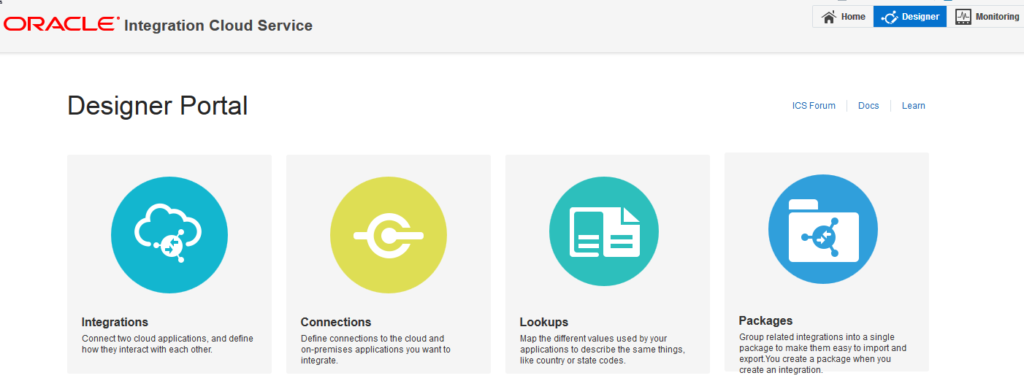Introduction to Oracle Integration Cloud (OIC)
Overview of OIC and Its Role in Modern Integrations
Oracle Integration Cloud (OIC) is a comprehensive, cloud-based platform designed to facilitate seamless connectivity between diverse applications, whether on-premises or in the cloud.
With its powerful automation, prebuilt adapters, and advanced integration capabilities, OIC enables businesses to streamline workflows, enhance efficiency, and reduce operational complexities.
As enterprises increasingly adopt hybrid IT environments, OIC plays a crucial role in ensuring data consistency, process automation, and robust system interoperability.

Importance of Seamless Application Connectivity
In today’s digital landscape, businesses rely on multiple applications for various functions, including customer relationship management (CRM), enterprise resource planning (ERP), and supply chain management (SCM).
However, these applications often operate in silos, leading to inefficiencies and data discrepancies. OIC helps bridge these gaps by enabling smooth data exchange and process synchronization, ultimately enhancing decision-making and business agility.
Understanding Lookups in OIC
Definition of Lookups

Lookups in Oracle Integration Cloud serve as predefined mappings that establish associations between values used in different applications.
They act as reference tables that help translate values between disparate systems, ensuring smooth data integration and standardization across various business applications.
Purpose of Lookups
The primary purpose of lookups is to facilitate seamless communication between applications that use different terminologies for the same concept. By providing a centralized repository for value mappings, lookups enhance integration accuracy and minimize errors.
Examples of Lookups in OIC
- Country Code Mapping: One application may use “USA” while another uses “United States” or “840” for the same country.
- Currency Code Standardization: A financial system may store currency as “USD,” whereas another may use “US Dollars.”
- Department Codes: One HR system may represent the marketing department as “MKT” while another uses “Marketing.”
Benefits of Using Lookups in OIC
Simplified Data Mapping
Lookups eliminate the need for complex transformation logic by providing a centralized mapping table. This simplifies the integration process and enhances maintainability.
Enhanced Data Consistency
By standardizing data values across integrated systems, lookups ensure that discrepancies are minimized, reducing the chances of integration failures and data misinterpretation.
Improved Maintenance
Since lookups are managed centrally, updates to mappings can be made easily without modifying the core integration logic. This makes it convenient to adapt to changing business requirements.
Implementing Lookups in OIC
Creating a Lookup
- Navigate to Lookups Section: Log in to the OIC console and go to the “Lookups” module.
- Create a New Lookup: Click on “Create” and provide a meaningful name for the lookup table.
- Define Source and Target Columns: Specify the source system’s values and their corresponding target system values.
- Save and Deploy: Once the mapping is completed, save and deploy the lookup.
Defining Lookup Entries
- Ensure the lookup table covers all possible values required for seamless data transformation.
- Use clear and well-structured key-value pairs for easy reference.
Utilizing Lookups in Integrations
- Use lookups in data transformation tasks within integrations.
- Reference lookup values dynamically in integration flows.
- Apply lookups in decision logic for automated data processing.
Best Practices for Managing Lookups in OIC

Consistent Naming Conventions
Adopting standardized naming conventions for lookups helps in easy identification and management. Avoid generic names and use descriptive identifiers.
Regular Updates and Reviews
Periodically reviewing Oracle lookup tables ensures they remain relevant and aligned with current business requirements. Regular audits help identify obsolete mappings and update them accordingly.
Version Control
Maintaining versions of lookup tables allows businesses to track changes over time and roll back to previous versions if needed, ensuring stability and control.
Access Control
Restricting lookup modifications to authorized personnel prevents unintended changes that could disrupt integrations. Assign appropriate roles and permissions for lookup management.
Common Pitfalls and How to Avoid Them
Overcomplicating Lookups
Avoid excessive granularity in lookups. Keep them simple and meaningful to prevent unnecessary complexity in integrations.
Neglecting Documentation
Maintaining documentation for lookups ensures that all stakeholders understand their purpose and usage, making troubleshooting and updates easier.
Ignoring Performance Implications
Ensure that lookups are optimized for performance by keeping the number of entries manageable and avoiding redundant mappings.
FAQs
What are Lookups in Oracle Integration Cloud?
Lookups in OIC are tables that map values from one system to another, ensuring seamless data integration.
How do Lookups improve integration performance?
By standardizing value mappings, lookups reduce transformation logic complexity and enhance data consistency, leading to more efficient integrations.
Can Lookups be updated without modifying integration logic?
Yes, lookups can be updated independently without affecting core integration workflows, making maintenance easier.
What is the best way to manage Lookups in OIC?
Using consistent naming conventions, regular reviews, version control, and access management ensures efficient lookup management.
External Sources and References
- K21 Academy: Introduction to Oracle Integration Cloud Service
- Wipro: Oracle Integration Cloud Practice
Conclusion
Lookups in Oracle Integration Cloud are powerful tools that simplify data mapping, enhance consistency, and improve integration maintainability. By following best practices such as using standardized naming conventions, regularly updating mappings, and implementing version control, businesses can maximize the efficiency of their integrations. With the right approach, lookups can significantly streamline application connectivity, ensuring seamless and error-free data exchanges.
Get a Free Demo Today!
Want to see how Oracle Integration Cloud can optimize your business processes? Request a free demo today and explore how lookups can simplify your integrations and enhance data consistency. Contact our team now!

